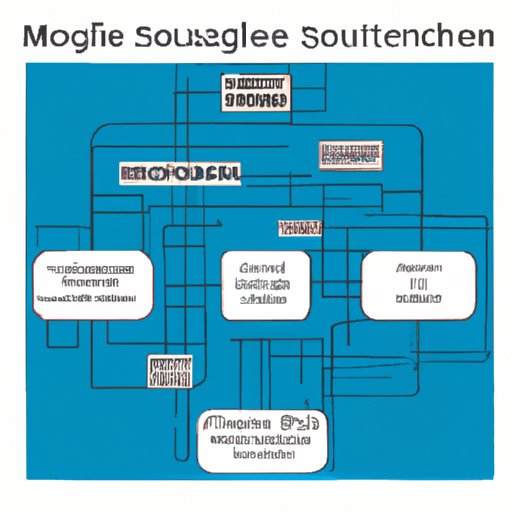Introduction
Software architecture is the fundamental structure of a software system. It is a set of decisions that shape the organization, behavior, and functionality of a software system. It is usually expressed as a graphical diagram or model that consists of components, their relationships, and the interactions between them. As such, software architecture plays an important role in the development of complex software systems.
What is Software Architecture?
Software architecture is a high-level description of the structure of a software system. It is a blueprint that guides the development team in creating the system’s components and their relationships. The aim is to optimize the system for its purpose, such as scalability, reliability, availability, security, maintainability, and extensibility. The architecture describes the overall design of the system, including the components, their interactions, and the relationships between them.
Understanding the Different Types of Software Architecture
Software architecture can be divided into two categories: monolithic and modular. Monolithic architectures are built as a single unit, meaning that all components are tightly coupled. This type of architecture is easy to develop and deploy, but it is difficult to modify or scale. Modular architectures, on the other hand, are built as independent components that can be easily modified, scaled, and deployed independently. This type of architecture is more complex to develop, but it is much more flexible and easier to maintain.
Exploring Software Architecture
Software architecture is an important factor in determining the success of a software system. It affects the system’s quality, performance, scalability, security, and maintainability. Understanding the fundamentals of software architecture is essential for developers who want to create successful software systems.
Introduction to Fundamental Concepts
Software architecture is based on several fundamental concepts. These include components, relationships, and interactions. Components are the individual pieces of a software system, such as classes, modules, functions, and objects. Relationships refer to the connections between components, such as inheritance, composition, and aggregation. Interactions define how components interact with each other, such as method calls, message passing, and data sharing.
How Software Architecture Impacts System Quality and Performance
Software architecture has a direct impact on the quality and performance of a software system. Poorly designed architectures can lead to slow performance, bugs, and other issues. On the other hand, well-designed architectures can improve performance, reduce bugs, and make the system more reliable. According to a study by IBM, “The architecture of a software system directly affects its quality and performance, and should be designed with these goals in mind.”
Designing Software Architectures
Designing effective software architectures requires careful thought and planning. It involves understanding the requirements of the system, the components needed to build it, and the relationships and interactions between those components. By following best practices and adhering to certain design principles, developers can create robust and scalable software architectures.
Best Practices
When designing software architectures, developers should keep the following best practices in mind:
- Keep it simple – Simplicity is key when it comes to software architecture. Complex designs can lead to confusion and mistakes.
- Understand the requirements – Before designing the architecture, take time to understand the system’s requirements and how they will affect the design.
- Design for scalability – Make sure the architecture is designed to accommodate future growth and changes.
- Test early and often – Testing early and often helps identify potential problems before they become major issues.
Adopting a Modular Software Architecture
Modular software architectures are becoming increasingly popular due to their flexibility and scalability. In a modular architecture, the system is divided into independent components that can be developed and deployed independently. This makes it easier to modify and scale the system as needed. Additionally, it allows for better code reuse and faster development cycles.
Conclusion
Software architecture is a critical component of any software system. It determines the quality and performance of the system, and should be carefully designed to meet the needs of the project. By following best practices and adopting a modular architecture, developers can create robust and scalable software systems.
Benefits of Adopting a Modular Software Architecture
Adopting a modular software architecture offers several benefits, including:
- Faster development cycles
- Easier modification and scalability
- Better code reuse
- Improved reliability and performance
Summary of Key Points
Software architecture is the fundamental structure of a software system. It is a set of decisions that shape the organization, behavior, and functionality of a software system. There are two main types of software architecture: monolithic and modular. Modular architectures are becoming increasingly popular due to their flexibility and scalability. When designing software architectures, developers should keep simplicity, scalability, and testing in mind. Adopting a modular architecture can offer several benefits, including faster development cycles, easier modification and scalability, better code reuse, and improved reliability and performance.
(Note: Is this article not meeting your expectations? Do you have knowledge or insights to share? Unlock new opportunities and expand your reach by joining our authors team. Click Registration to join us and share your expertise with our readers.)
